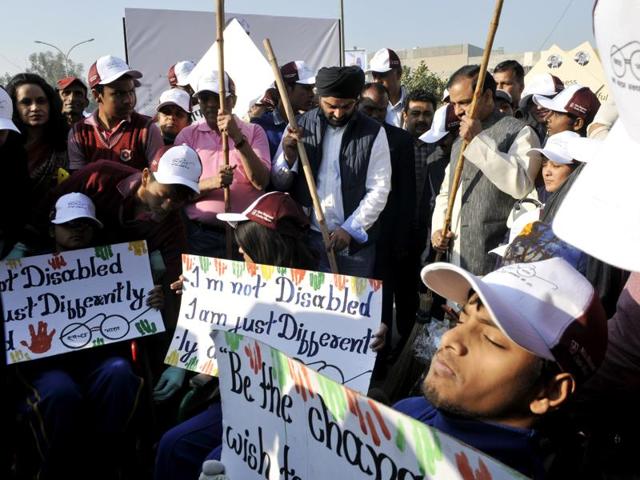Tourism needs to become an enabling force
Universal access to tourism for the differently-abled is one of the necessities for an equitable world, and it may be easier to achieve in increments than struggle to bridge access inequities wholesale
This year is focused on accessible tourism and the idea that no person should be denied the value and the joys of travel for want of easily-created amenities to accommodate their special needs.

The demand for accessible tourism has gained ground in the last decade on the understanding that a considerable section of society — by some estimates, nearly a third of the world’s population — encounters varying degrees and types of access constraints.
Read: Accessible India Campaign? No country for the differently-abled
In much of the Western world, gaps in service provision are being bridged through fundamental rights legislation, proactive infrastructural reform, building codes, and special needs rights movements, among other indicators of change. In the Indian context, though accessible tourism has been formally recognised by the government, attempts to harmonise responsibilities under the UN Convention of the Rights of Persons with Disabilities, to which India is a signatory, with the existing legislation governing disability have been more difficult. Efforts to reform the Persons with Disability (Equal Opportunities, Protection of Rights and Full Participation) Act 1995 — the governing act that guarantees, among other rights, the creation of a barrier- free environment — are yet to make a difference. The Accessible India campaign, launched last year to cater in a better way to access in infrastructure, transport, accommodation among others, with a provisional auditing mechanism built into it, may be a step in the right direction, though it is early days yet.
Read: Persons with disabilities: An enabling force in India’s growth story
Also, the lack of differentiation between various aspects of access needs constitutes a problem. The universal access argument requires an understanding that disability itself is not homogeneous. It is multi-dimensional, extending to mobility, auditory, visual, cognitive, mental health, age-related or long-term health conditions. Ideal conditions for universal access may be easier stated than achieved. There are, however, incremental steps that destination managers, tour providers and resort owners, among other stakeholders, can take to build the experience, even as policy catches up.
The National Museum in New Delhi had begun a project, with the support of Unesco and some volunteer groups, to make aspects of the museum accessible to the visually impaired. The result was the Anubhav Tactile Gallery, which houses 22 replicas of museum objects, representing some 5,000 years of Indian art providing an enriching visitor experience through tactile pathways, layered and textured impressions of 2D works, an audio-guide and Braille labels.
Some of the strategies that tourism operators might use to align themselves better with the principles of universal design include incorporating barrier-free designs and familiarising themselves with laws and global accessibility standards.
Universal access to tourism is one of the necessities for an equitable world, and it may be easier to achieve in increments than struggle to bridge access inequities wholesale.
Venu V is principal secretary, tourism, Kerala
The views expressed are personal





